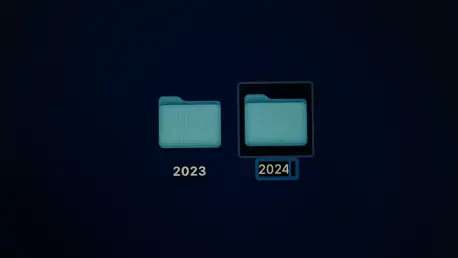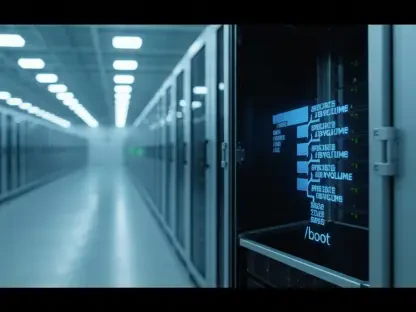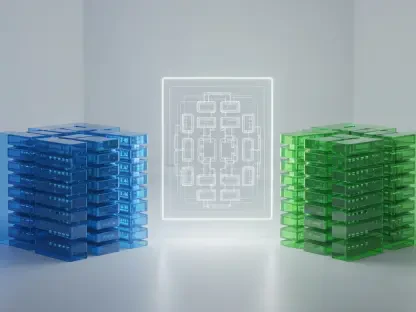As the Philippines approaches another pivotal election, concerns are mounting over the integrity of the process due to significant software updates in the Automated Election System (AES). Various advocacy groups are voicing skepticism about the transition from version 3.4 to 3.5 in electronic voting and counting machines, questioning the security and reliability of the AES implemented by the Commission on Elections (Comelec). At the center of the controversy are software discrepancies and alleged inconsistencies that some fear could undermine trust in the electoral mechanisms. These concerns have sparked debates about manual vote counting and highlight apprehensions regarding election integrity.
Software Discrepancies and Public Doubts
Concerns from Former Lawmakers
The crux of the skepticism regarding the AES revolves around hash code discrepancies, which have become a contentious issue among different sectors. Notably, former Bayan Muna party-list representatives Neri Colmenares and Carlos Zarate have emerged as vocal opponents of the software update. Zarate has pointed to the transition from the certified version 3.4, which underwent rigorous local source code review and independent certification, to the newer version 3.5, categorized as “updated” by Comelec. This shift has raised alarms about potential vulnerabilities in the electoral process. He posits that differences in hash codes might suggest unauthorized modifications to the software, potentially paving the way for fraudulent activities and voter disenfranchisement. Consequently, the need for a thorough examination of these updates and their implications is being echoed across various forums.
Call for Transparency and Accountability
Colmenares has been equally assertive in calling for transparency to allay these concerns. He emphasizes the necessity for Comelec to divulge all pertinent details surrounding the transition from version 3.4 to version 3.5, particularly explanations for hash code changes and the rationale for the software upgrade itself. This openness, he argues, is vital to restoring public confidence in the electoral system and ensuring the legitimacy of the democratic process. He advocates for comprehensive disclosure of the modifications, reasons behind them, and their possible impact on election results. Through such transparency, Colmenares believes that any lingering doubts about electoral integrity can be adequately addressed, thereby safeguarding the sanctity of the polling process.
Comelec’s Response and Public Assurance
Clarification and Reassurance
In light of these mounting concerns, Comelec seeks to reassure the public regarding the integrity of their operations. Through official statements, Comelec has clarified that the version 3.5 software deployed by automated counting machines (ACMs) has gone through stringent review and verification processes. According to Comelec, the original version 3.4 that underwent rigorous auditing was later designated as version 3.5 post third-party assessments. This explanation serves to dispel any misunderstandings about the purported software discrepancies, emphasizing that the ACM source code was thoroughly vetted and its hash codes matched the final trusted build verified by independent and internationally recognized certification bodies. By addressing these questions, Comelec aims to reinforce confidence in its election management systems.
Legal Implications of Misinformation
Moreover, Comelec has cautioned the public against spreading inaccurate information that could incite unwarranted panic, labeling such acts as electoral offenses. The agency argues that the ACMs in circulation have completed necessary review phases and undergone a trusted build by industry experts before deployment. This warning highlights the potential consequences of disseminating false narratives and underscores the importance of informed discussions surrounding electoral processes. By delineating the stringent evaluation methods and underscoring the reliability of their equipment, Comelec is attempting to diminish any perceptions of electoral insecurity and remind stakeholders of the legal ramifications of spreading misinformation.
Advocates for Manual Count
Bayan’s Push for Manual Counting
Yet, despite Comelec’s repeated assurances, various interest groups continue to advocate for manual counting as a safeguard against potential discrepancies related to automated processes. Bagong Alyansang Makabayan (Bayan) has emerged as a prominent voice, calling for the manual tallying of votes across all precincts. The organization insists that any inconsistencies between machine-counted and manually counted ballots should see the latter take precedence in official election returns. Bayan remains vocal about concerns related to the purported questionable integrity of automated systems, citing instances of alleged overvoting, undervoting, and erroneous vote readings. To address these allegations, Bayan demands that Comelec furnish complete details about the software transition, including reasons behind the hash code alterations.
Impacts Observed During Voting
Even as Comelec continues its campaign for public confidence, multiple issues have surfaced during voting operations that have fueled additional skepticism. Reports of automated counting machines refusing shaded ballots or processing ballots of individuals who have already voted have emerged. Alyansa Para sa Bagong Pilipinas senatorial candidate and former senator Panfilo “Ping” Lacson disclosed experiencing glitches, mentioning instances where his ballot was not immediately accepted by the machine. These occurrences, while remedied, have intensified the discourse around the reliability of the AES and sparked further calls to reconsider manual counting as a more transparent alternative.
AES Transition and Machine Leasing
Details of the Machine Contract
Adding another dimension to the ongoing discourse is the transition to new voting machines, facilitated following Comelec’s contractual agreement with South Korean firm Miru Systems Co. Ltd. The deal, approximating P18 billion, involves the leasing of an AES, attracting scrutiny regarding its timing and necessity. Concerns have emerged over why Comelec decided to channel additional resources into leasing new equipment when existing vote counting machines from Smartmatic, the former AES provider, remain functional. While Smartmatic’s VCMs are available since purchased by the Philippine government, Comelec’s decision not to reuse them stems from previously reported issues during elections. For instance, during the 2022 presidential polls, about 2,000 Smartmatic-based VCMs experienced malfunctions, raising questions about their reliability.
Implications of Comelec’s Choice
These deliberations about machine leasing and software updates encapsulate a multifaceted debate about the Philippine electoral system’s dependability, transparency, and trustworthiness. Comelec’s decision to switch to a new provider during the current election cycle has sparked inquiries regarding the potential risks and benefits associated with this change. While Comelec endeavors to address prevailing queries and alleviate apprehensions, numerous advocacy groups remain unconvinced, pushing for manual vote counting to mitigate perceived irregularities and reinforce voter confidence in the electoral process. These competing perspectives bring to the forefront broader discussions about the place and efficacy of automated systems in upholding electoral integrity amidst ongoing technological developments.
Ensuring Trust in the Electoral System
As the Philippines gears up for a crucial election, there’s growing unease about the integrity of the process due to substantial software modifications in the Automated Election System (AES). Different advocacy groups are expressing doubts about moving from version 3.4 to 3.5 in the electronic voting and counting machines, questioning both the security and reliability of the AES set up by the Commission on Elections (Comelec). While the intention behind these updates might aim to improve system efficiency, at the heart of the controversy are software discrepancies and alleged inconsistencies that some believe could erode trust in the electoral framework. These concerns are fueling discussions on the merits of manual vote counting, highlighting broader worries about election integrity. As stakeholders debate, the spotlight shines on whether technological advances can coexist with transparent and reliable electoral processes, balancing innovation with the need for citizens to feel confident in their voting system.









